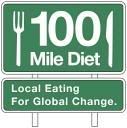Food Safety Information for Emergencies
Hot off the heels of yesterday's podcast about Refrigerator safety, this information came to my attention. It's a warning from the FDA regarding food safety during and after a catashrophic event involving power failures.
As Hurricane Katrina hits Alabama, Mississippi, Louisiana and Florida, the Food and Drug Administration (FDA) wants area residents to be prepared for the aftermath. FDA is providing important tips to help people affected by this storm to protect their health and food supply.
As flooding occurs, immediately evaluate stored food and water supply. Perishable food such as meat, poultry, seafood, milk and eggs that are not properly refrigerated or frozen may cause illness if consumed, even when it is thoroughly cooked.
Here's what FDA suggests consumers can do at home to keep their food safe:
Food safety when the power goes out
Keep the refrigerator and freezer doors closed as much as possible to maintain the cold temperature. The refrigerator will keep food cold for about 4 hours if it is unopened. A full freezer will keep the temperature for approximately 48 hours (24 hours if it is half full) if the door remains closed. Buy dry or block ice to keep the refrigerator as cold as possible if the power is going to be out for a prolonged period of time. Fifty pounds of dry ice should hold an 18-cubic foot fully-stocked freezer cold for two days.
If you plan to eat refrigerated or frozen meat, poultry, fish or eggs while they are still at safe temperatures, it’s important that the food is thoroughly cooked to the proper temperature to assure that any food borne bacteria that may be present is destroyed.
Wash fruits and vegetables with water from a safe source before eating.
For infants, if possible, use prepared, canned baby formula that requires no added water. When using concentrated or powdered formulas, prepare with bottled water if the local water source is potentially contaminated.
Once the power is restored
Once the power is restored you will need to evaluate the safety of the food. If an appliance thermometer was kept in the freezer, read the temperature when the power comes back on. If the thermometer stored in the freezer reads 40 degrees F or below the food is safe and may be refrozen. If a thermometer has not been kept in the freezer, check each package of food to determine the safety. Remember, you can't rely on appearance or odor. If the food still contains ice crystals or is 40 degrees F or below, it is safe to refreeze or cook.
Refrigerated food should be safe as long as the power is out for no more than 4 hours. Keep the door closed as much as possible. Discard any perishable food (such as meat, poultry, fish, eggs or leftovers) that has been above 40 degrees F for two hours or more.
For a list of how to handle specific refrigerated and frozen foods during power outages, go here.
Food and Water Safety During Hurricanes and Floods
Hurricanes, especially if accompanied by a tidal surge or flooding, can contaminate the public water supply. Drinking contaminated water may cause illness. You cannot assume that the water in the hurricane-affected area is safe to drink. Listen to local announcements for updated information on the safety of the water supply.
If bottled water is not available and the safety of tap water is questionable, follow these directions to purify it:
If you have a heat source available, boil the water vigorously for 1-3 minutes (at altitudes above one mile, boil for 3 minutes). Water should be bubbling and rolling. (www.cdc.gov)
If you can't boil water, add 8 drops (about 1/8 teaspoon or 0.75 ml) of newly purchased, unscented liquid household bleach per gallon of water, stir it well and let the water stand for 30 minutes before you use it. Note that using bleach will not kill parasitic organisms. (www.epa.gov/OGWDW/faq/emerg.html).
You can also use water-purifying tablets from your local pharmacy or sporting goods store. (www.cdc.gov).
Do not eat any food that may have come into contact with flood water. Discard any food without a waterproof container if there is any chance that it has come into contact with floodwater. Undamaged, commercially canned foods can be saved if you remove the labels, thoroughly wash the cans and disinfect them with a solution consisting of 1/4 cup of bleach per gallon of water for clean surfaces. Re-label your cans, including the expiration date, with a marker. Food containers with screw-caps, snap lids, and home canned foods should be discarded if they have come in contact with flood water because they cannot be disinfected.
Discard wooden cutting boards, plastic utensils, baby bottle nipples and pacifiers. There is no way to safely clean them if they have come in contact with contaminated flood waters.
Thoroughly wash metal pans, ceramic dishes and utensils with soap and hot water. They should then be sanitized by boiling in clean water or immersing them for 15 minutes in a solution of 1/4 cup of chlorine bleach per gallon of water.











2 Comments:
Thanks for putting all of this important information in one place. I appreciate it!
You're welcome!
Post a Comment
<< Home